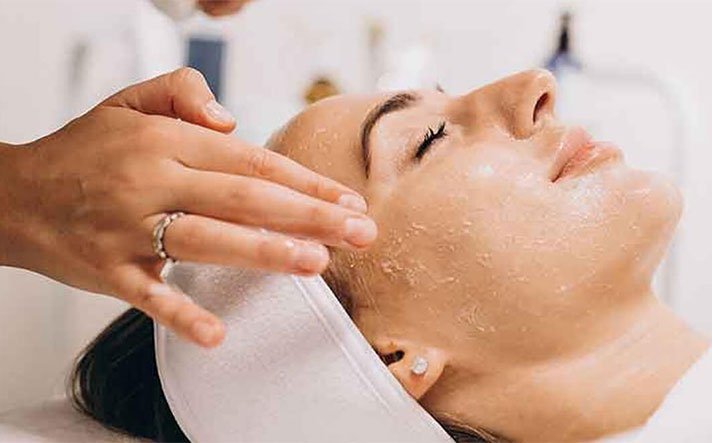Your skin is the largest organ in your body, and one of the most visible. Yet, it’s also one of the most neglected. Many people wait until a problem becomes serious before considering a visit to a dermatology clinic. In reality, early intervention can make a significant difference not only in your skin’s appearance but also in your overall health. Whether you’re battling persistent acne, noticing unusual moles, or simply want to maintain healthy, glowing skin, knowing when to seek professional help is key.
Here are the top signs you should consider visiting a dermatology clinic today.
1. Persistent or Severe Acne
Acne is one of the most common reasons people seek out dermatological care. While over-the-counter treatments can help mild breakouts, persistent, cystic, or painful acne requires a professional approach. Dermatologists can diagnose the root cause of your acne—be it hormonal imbalance, diet, stress, or something else—and provide tailored treatment options like prescription medications, chemical peels, or laser therapy.
Ignoring acne can lead to scarring and long-term skin damage. A visit to a dermatology clinic can prevent that from happening and help you regain clear, healthy skin.
2. Unexplained Skin Rashes or Irritation
If you’ve developed a rash that won’t go away, it could be more than just an allergy or insect bite. Chronic rashes, itching, redness, or swelling may point to underlying skin conditions such as eczema, psoriasis, or contact dermatitis. These conditions often need more than just a topical cream to manage effectively.
A dermatologist can help identify the trigger and provide long-term solutions that go beyond temporary relief.
3. Changes in Moles or New Skin Growths
One of the most important reasons to visit a dermatology clinic is to screen for skin cancer. If you notice new moles, or changes in the size, shape, or color of existing ones, it’s essential to get them examined. Irregular, asymmetrical moles with uneven borders or multiple colors could be warning signs of melanoma or other skin cancers.
Dermatologists are trained to identify potentially dangerous spots early, improving treatment outcomes significantly if action is taken quickly.
4. Hair Loss or Thinning
Noticing more strands in your brush or shower drain? Hair thinning and hair loss can be caused by a range of issues, from genetics and hormonal changes to scalp infections or autoimmune disorders.
A visit to a dermatology clinic can help determine whether your hair loss is temporary or permanent and what treatments—like PRP therapy, medications, or lifestyle changes—might help restore your hair health.
5. Skin Discoloration or Uneven Tone
If you’re dealing with dark spots, patches, or uneven pigmentation, it could be due to sun damage, hormonal shifts, or conditions like melasma or vitiligo. These issues often need targeted treatments that only a dermatologist can provide, such as topical prescriptions, light therapy, or chemical peels.
Addressing these concerns professionally can not only boost your confidence but also ensure there’s no underlying issue going unnoticed.
6. Persistent Dry, Scaly, or Peeling Skin
Dry skin is common, especially in harsh climates or seasons. But if your skin remains dry, flaky, or itchy despite moisturizing regularly, it could be a sign of a more serious issue like eczema, psoriasis, or a fungal infection.
Dermatologists can accurately diagnose such problems and recommend medicated creams, systemic treatments, or skincare routines to bring your skin back to balance.
7. Nail Changes or Infections
Our nails often reflect our overall health. If you’re noticing thickening, discoloration, brittleness, or abnormal nail growth, it could be more than cosmetic. These symptoms may signal fungal infections, nutritional deficiencies, or even skin cancer under the nail.
A dermatologist can examine nail concerns and provide treatments that are far more effective than store-bought solutions.
8. Excessive Sweating (Hyperhidrosis)
If you sweat excessively—even in cool temperatures or while at rest—it may be a medical condition called hyperhidrosis. This can lead to discomfort, embarrassment, and even skin infections if left untreated.
Dermatology clinics offer advanced treatments such as Botox injections, prescription-strength antiperspirants, or iontophoresis to help manage the condition.
9. Warts, Skin Tags, or Other Growths
Skin growths like warts, tags, or benign lumps may seem harmless, but they can become irritated or infected. Additionally, it’s important to confirm that such growths aren’t something more serious.
Dermatologists can safely and efficiently remove these growths using non-invasive methods, often in a single visit.
10. Desire for Professional Skin Advice or Anti-Aging Treatments
Even if you don’t have a specific concern, visiting a dermatology clinic for preventive care and cosmetic advice is a smart move. Whether you’re looking for expert recommendations on sunscreens, skincare routines, or treatments to reduce wrinkles and age spots, dermatologists can guide you with science-backed solutions tailored to your skin type.
From microneedling and chemical peels to non-invasive facelifts, dermatology clinics offer various ways to keep your skin youthful and radiant.
Final Thoughts
Your skin communicates a lot about your internal health and environmental exposure. Ignoring the signs can lead to complications, not just cosmetically but medically as well. Whether it’s persistent acne, an unusual mole, or unexplained hair loss, a visit to a dermatology clinic can provide clarity, relief, and a personalized path to healing.
In 2025, with the advancement of dermatological technologies and therapies, taking charge of your skin health has never been easier—or more important. Don’t wait until small issues become major problems. If your skin is sending signals, it’s time to listen—and act.
